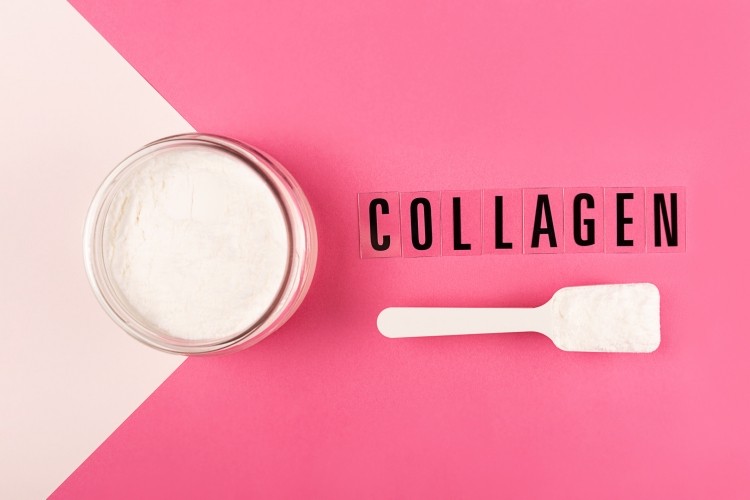Researchers successfully develop hydrolyzed collagen serum derived from fish skin by-products

In line with the cosmetic product sustainability trend dominating consumer demand in 2023, researchers in Thailand published a study last year outlining their investigation into how the upcycling of fishery by-products can be sourced and applied to cosmetic product formulation. Specifically, researchers investigated the use of hydrolyzed collagen derived from fish skin cast-offs to see if it could be a beneficial bioactive ingredient for topical cosmetic application.
The idea to upcycle product processing waste is nothing new to the cosmetics industry – indeed, as recently reported in CosmeticsDesign, spent coffee grounds and coffee silverskin have also been studied for their potential as a beneficial ingredient in cosmetic products with some current success in implementation. As detailed in this study, published in the open-source journal Sustainability, “the idea of utilizing by-products from industries and agriculture as sustainable materials are of great importance, especially for the production of green cosmetic products.”
Hydrolyzed collagen background
Researchers focused on solving an issue relatively close to home but searched for a solution that could be applied on a global scale. In Thailand, one of the most significant by-products of aquaculture production is Asian seabass skin, which causes major challenges for the marine food industry as there is currently no solution to dispose of this by-product on the scale required adequately.
Fish skin, like the Asian seabass, is composed of collagen type I, the same kind of collagen found in human skin and rich in protein and amino acids. Recent studies have identified hydrolyzed collagen as “a promising source of biologically active peptides for nutritional, pharmaceutical, and cosmeceutical applications,” containing “safe natural compounds with high biological activities.”
Asian seabass skin, specifically, has been shown to contain “a variety of beneficial properties such as good wound-healing and antioxidant activities, fibroblast proliferation activities, and collagen synthesis enhancement,” qualifying it as an excellent candidate for topical cosmetic formulation. Further, hydrolyzed collagen acts as a natural moisturizer, and applying collagen-enriched skin care products on human skin can boost natural collagen production and retention, helping the skin maintain elasticity. This is one of the main reasons cosmetics and skin care manufacturers prefer to formulate products using collagen when developing anti-aging cosmetic products for topical application.
The aims of the study
The aim of this study was three-fold: first, researchers sought to “formulate a cosmetic product containing hydrolyzed fish collagen obtained from a by-product of fish processing industries, and other effective ingredients such as vitamin C, vitamin E and vitamin B3.” Once this was accomplished, the research team evaluated “the physicochemical properties and stability of the product.” Then it concluded by conducting “a facial skin evaluation test wherein volunteers use the product and have their facial skin analyzed,” to determine the product’s efficacy and results.
To best evaluate the potential benefits of Asian seabass skin by-product derived hydrolyzed collagen, researchers formulated a serum using hydrolyzed collagen powder enriched with added vitamins including C, E, and B3. The serum was visually assessed for appearance and viscosity, and then testing was performed to ascertain DPPH antioxidant activity and stability. Additional microbiological testing was conducted to confirm product safety, as was heavy metal testing, demonstrating positive results.
Having approved the serum for human clinical trials, researchers assembled a group of 40 qualified male and female volunteers between the ages of 21 and 70 for product testing. A skin irritation test was administered first, and then volunteers were instructed to apply 1mL of serum on facial skin two times a day for one month. “RGB and UV spectrum in Visia skin analysis were used to measure parameters such as the amount of pigment, spots, facial acne, color, pores, wrinkles, etc.,” and skin analysis was performed at 0, 2, and 4 weeks. At the study’s conclusion, volunteers were given a Satisfaction Assessment Questionnaire for their insights on the experience using the product.
Findings and potential future applications for the cosmetics industry
“The results of the facial skin evaluation showed that significant facial skin improvements such as reduced pores, wrinkles and UV acne, and increased skin moisture were observed in volunteers from at least 2 weeks of product usage,” wrote researchers. Results showed that hydrolyzed collagen’s ability to bind water encouraged proper water content maintenance in the skin to improve skin moisture over time.
The hydrolyzed collagen worked in tandem with added vitamins C, E, and B3, showing “significant improvements to some of the facial skin parameters.” Further, volunteers who completed the Satisfaction Assessment Questionnaire rated the serum with high scores, indicating strong user satisfaction and positive interaction with the product.
“In conclusion,” researchers wrote, “the HC serum formulated in this study was proven to be effective as seen in the results, and it has great potential in becoming a commercial cosmeceutical product that can be used for anti-aging and skin lightening.” The results are promising and encouraging for cosmetics and personal beauty product manufacturers and suppliers worldwide who invest and commit to formulating products with more sustainable ingredients.
Using fishery by-products like Asian seabass skin offers a solution for aquaculture companies looking for more environmentally-friendly disposal methods and skin care companies seeking more sustainable options to provide consumers with – a potential win-win scenario for all involved. As the trend of environmental sustainability continues to gain steam across cosmetics and personal beauty product industries, it will be intriguing to see if products formulated with fish skin-derived hydrolyzed collagen begin to appear on retail shelves in the coming months.
Source: Sustainability
2022; 14(24):16553. https://doi.org/10.3390/su142416553
"Hydrolyzed Fish Collagen Serum from By-Product of Food Industry: Cosmetic Product Formulation and Facial Skin Evaluation"
Authors: Amnuaikit T. et al.










![Chinese study highlights mental health challenges in atopic dermatitis, emphasising holistic patient care. [Getty Images]](https://www.cosmeticsdesign-europe.com/var/wrbm_gb_food_pharma/storage/images/_aliases/wrbm_tiny/publications/cosmetics/cosmeticsdesign-asia.com/headlines/formulation-science/chinese-research-linking-atopic-dermatitis-to-mental-health-underscores-need-for-holistic-care/17040623-1-eng-GB/Chinese-research-linking-atopic-dermatitis-to-mental-health-underscores-need-for-holistic-care.jpg)








